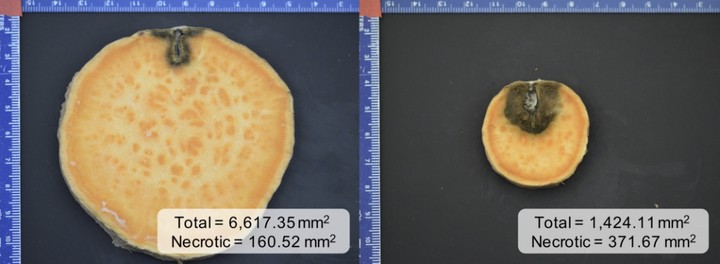Sweetpotato root development influences susceptibility to black rot caused by the fungal pathogen Ceratocystis fimbriata

Abstract
Black rot of sweetpotato caused by Ceratocystis fimbriata, is an important reemerging disease threatening sweetpotato production in the United States. This study assessed disease susceptibility of the storage root surface, storage root cambium, and slips (vine cuttings) of 48 sweetpotato cultivars, advanced breeding lines, and wild relative accessions. We also characterized the effect of storage root development on susceptibility to C. fimbriata. None of the cultivars examined at the storage root level were resistant, with most cultivars exhibiting similar levels of susceptibility. In storage roots, Jewel and Covington were the least susceptible and significantly different from White Bonita, the most susceptible cultivar. In the slip, significant differences in disease incidence were observed for above and below ground plant structures among cultivars, advanced breeding lines, and wild relative accessions. Burgundy and Ipomoea littoralis displayed less below ground disease incidence as compared to NASPOT 8, Sunnyside and LSU-417, the most susceptible cultivars. Correlation of black rot susceptibility between storage roots and slips was not significant, suggesting that slip assays are not useful to predict resistance in storage roots. Immature, early developing storage roots were comparatively more susceptible than older, fully developed storage roots. The high significant correlation between storage root cross-section area and cross-sectional lesion ratio suggests the presence of an unfavorable environment for C. fimbriata as the storage root develops. Incorporating applications of effective fungicides at transplanting and during early storage root development when sweetpotato tissues are most susceptible to black rot infection may improve disease management efforts.